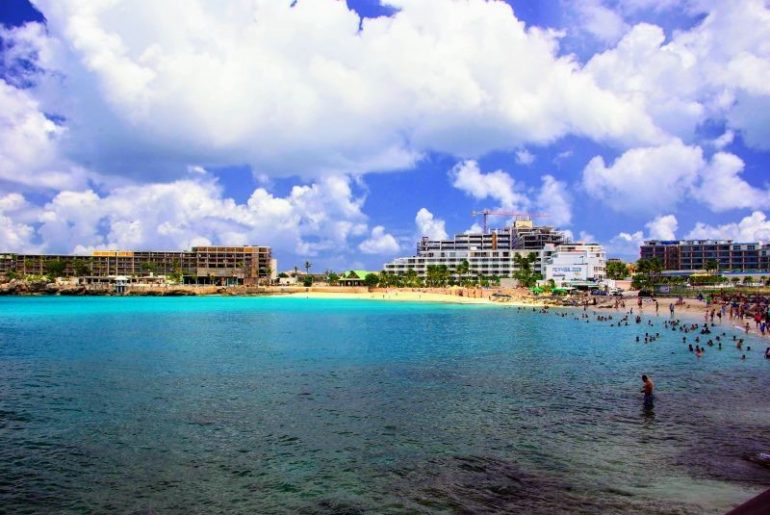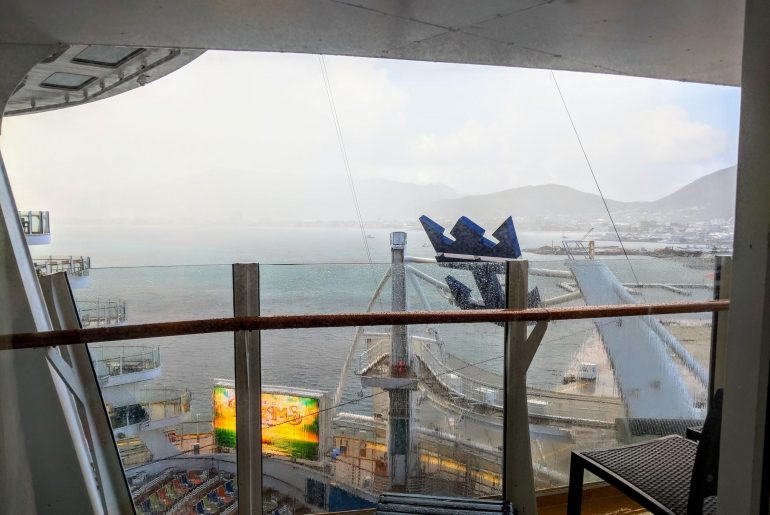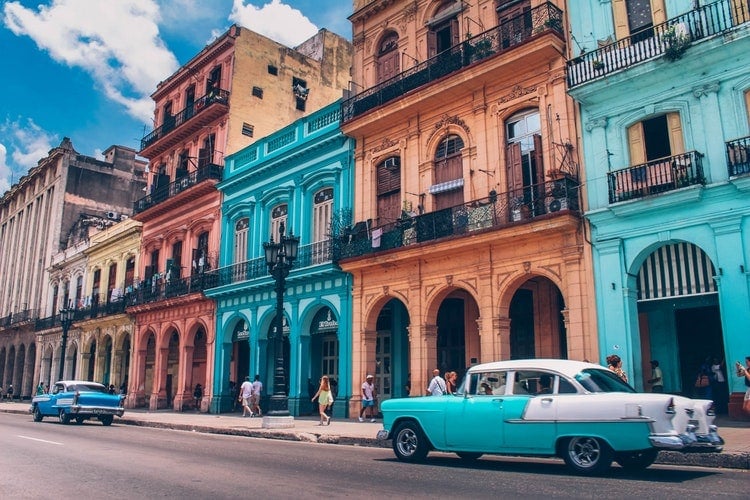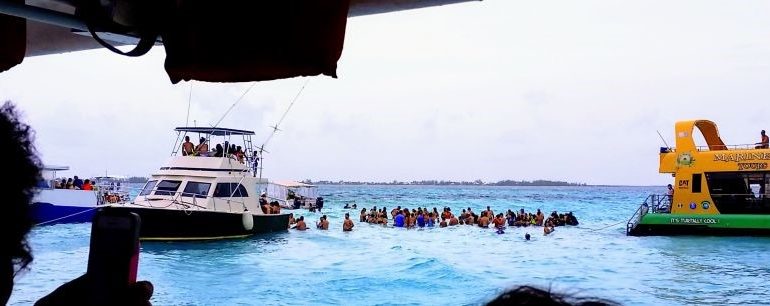GUEST POST: Alyce Meserve, diycruiseplan.com
Caribbean islands are easy ports to visit, which is one reason they’re such popular vacation destinations (also warm beaches, y’all).
Before you head out to the party, brush up on your knowledge of cruising with these tips about Caribbean ports.
1. On a Caribbean Cruise everyone takes US Dollars
What currency do I need for a Caribbean Cruise?
There’s no need to change money before your Caribbean cruise because all of the ports accept your money. Caribbean islands depend on tourism, particularly from cruise ships.
Many islands have their own local currencies.
If cruisers had to change money for each different island they visited, cruise guests would be overwhelmed with complexity.
When you pay with cash, you might get your change in a local currency. If you pay with a credit card, it may be charged in local currency and your credit card company will exchange currency.
Tour operators are also happy to accept tips in USD or Euro.
Either bring cash with you before embarking, use credit cards, or get cash from most ship casino ATMs.

Maho Beach, St. Maartin
If cruisers had to change money for each different island they visited, cruise guests would be overwhelmed with complexity.
When you pay with cash, you might get your change in a local currency. If you pay with a credit card, it may be charged in local currency and your credit card company will exchange currency.
Tour operators are also happy to accept tips in USD or Euro.
Either bring cash with you before embarking, use credit cards, or get cash from most ship casino ATMs.
The only exception is Cuba.
You must exchange your money for the Cuban peso, and credit cards are not accepted in Cuba.
2. Caribbean islands are safe to visit
Caribbean island locals are friendly and kind people. Cruisers will always have something to complain about, but I’ve always felt safe at every port I’ve visited.
Use common sense like you would anywhere.
Always be aware of your surroundings. Make sure someone knows where you are going. Port areas are safe inside the secured area. The most common crime is pickpocketing. Violence is rare.
Plan your excursions ahead if you are worried about safety. Someone will be waiting for you.
The best way to avoid being a target is not to look like a tourist. Don’t wear expensive jewellery or wear/carry luxury brands or draw attention to yourself.
3. Prepare yourself for the climate
The Caribbean has two seasons, dry and wet.
From November through April, the Caribbean has a moderate climate, with temperatures usually in the 70s (21C) and low 80s (26C). Nights might get into the 60s (15C). May through October can be warmer with highs in the mid to high 90s (35C). Scattered downpours are common, but pass quickly.

A scattered rain storm cools Philipsburg port in St. Maartin
A Caribbean cruise is very humid!
Heat plus humidity can bring on heat stroke and heat exhaustion more quickly. Air conditioning is your friend and you will find plenty of it on a cruise ship. When you step outside, you’ll get smacked with humidity.
Make sure to hydrate well.
If you are sensitive to heat, look for excursions that take you out of the heat like an air-conditioned bus tour or adventuring in the water.
4. Bring sunscreen
The Caribbean sun is for real. When you get closer to the equator, you get significantly more UV radiation exposure, even in December and January.
If you have fair skin, sunscreen is your best friend. Your skin can burn in as little as 10 minutes in June and July.
Sunburn can cause 3rd-degree burns (severely red to purplish skin discolouration, blistered skin accompanied by chills, mild fever, nausea, headache, or dehydration).
Bring sunscreen.
Lots of it. Make sure you use it liberally and reapply after 2 hours.
5. Don’t worry about hurricanes
Hurricane season runs from June 1 to November 30. It’s rare, but hurricanes can form in May and January.
These massive storms can toss cruise ships around like a rag doll, so most cruise lines avoid them as much as possible. When planning your Caribbean cruise, avoid peak season months like August and September if you’re concerned about cancellations or hurricane impacts.
Some cruise lines have meteorologists who track weather conditions and give recommendations where ships should go. They want guests have the most enjoyable experience. Safety is always the priority.
If a tropical cyclone demolishes a port before your cruise, the cruise line might change itineraries if the damage is severe (like in 2017 – Hurricane Maria and Irma).
6. Beware of hair braiding
In nearly every Caribbean port, you’ll find locals offering to braid your hair (if you have hair long enough to braid).
Even if this seems appealing, it’s a good idea to refrain from getting braiding performed there on impulse.
The tools used are not sterilized and many people reported getting head lice after a braiding.

I admit, I fell victim and got some braids, but about 3 hours later my head hurt so badly I had to take them out. I was very fortunate I did not get lice.
If your heart is set on braids, simply contact a licensed professional ahead of your arrival in that port and schedule an appointment.
7. Zika is still a threat
Zika virus spreads through mosquito bites and still poses a significant threat to everyone (not just pregnant women) visiting destinations south of Miami.
The CDC recommends using “EPA-registered insect repellents with one of the following active ingredients: DEET, picaridin, IR3535, oil of lemon eucalyptus, para-menthane-diol, 2-undecanone. Always use as directed.” The risk of negative effects from DEET are low, when used properly.
It’s a good idea to use insect repellent when leaving the ship in ports. I went on an excursion to the Mayan ruins in Mexico and was very glad I had on repellent–mosquitoes were everywhere, even in October!
Fortunately, you won’t find mosquitoes on the open ocean. The sun decks on a cruise ship are too high for mosquitoes to fly, so you are safe on the ship.
8. You don’t need a tourist visa
You do not need a tourist visa to visit the Caribbean on a cruise. Visas are only necessary for guests who stay 3 months or longer.
Cuba is the exception.
Visitors must have a valid passport and tourist visa to enter Cuba (yes, even Canadians and Europeans).
It’s not a big deal, though. There is no need to purchase the visa ahead of time. You will receive and pay for it on the ship.

9. Excursions
You can probably guess that excursions in the Caribbean are centred around water, such as beach breaks, snorkelling, diving, or sea life.
Most islands have charter boats like catamarans to take you out for a cruise, island tour from the water, or dolphin/whale watch. Others go out for SCUBA diving and snorkelling.
One of my favorites was Sting Ray City in Grand Cayman. We took a boat out to a sandbar in the bay and wild stingrays came to visit.
Rays were conditioned to know and trust the humans in this place who have food.
Stingrays are a little bit like puppies, curious and playful. Their tail barbs are intact, but there’s no need to worry. If you move cautiously in the water they will ignore you.

Stingray City, Grand Cayman
Some places offer adventure excursions like off-roading with 4x4s or Jeeps, hiking or touring. In St. Lucia I went out to see the active volcano and waterfalls.
Other excursions are culture focused, like tours of the island or food tours. The food tour I did in San Juan is one of the most memorable excursions I’ve ever done.
Because each island has a different European influence, some drive on the left, some drive on the right. If renting car, check if they drive on the same side of road as you.
10. Dolphin Swims
A word of caution regarding dolphin swims.
There is a lot information out there about keeping aquatic animals in captivity and the negative psychological and biological effects it has on these precious creatures.
Suffice it to say, while swimming with the dolphins is a romantic idea, giving the dolphinariums your money encourages the illegal capture, poaching and captivity of animals that deserve better lives.
If you love animals, there are tons of fun activities to do instead!
11. Languages & Culture
Most islands speak English, in addition to other languages like French, Dutch, Spanish or local creole, depending on which nation had the most influence.
European nations battled over Caribbean colonies from the 1400-1700s to determine which nation would exploit their natural resources. They all share a common history of slavery and compulsory migration. Today this means the islands are a blending of cultures from European and African roots, even (East) Indian and Hispanic/Native American.

Chacchoben (Mayan) Ruins near Costa Maya, Mexico
While they share many similarities, each has a different history. Local UNESCO sites, popular culinary dishes, economies, geography, climate, and history varies from each island to the next.
Islands are close together. Eastern Caribbean cruises originating from the islands like Puerto Rico can visit a new one each day without any sea days.
If you like sea days, you get more when you start your cruise in mainland USA like Florida or New York.
If you’re considering a cruise to the Caribbean, check out this post:
Cruise Review – Western Caribbean
How Much Does a Caribbean Cruise ACTUALLY Cost? (Real Examples)

Emma says:
Thanks so much for this Alyce! I haven’t been to the Caribbean for years and really do miss it. We’ve had snow in the UK this week so the warmth of the Caribbean seems like a dream!
I hope to get back there soon, and I will DEFINITELY bring lots of suncream.
About Alyce:
Alyce is the founder of diycruiseplan.com and a DIY travel enthusiast. Her first cruise was Alaska on Holland America and it made her excited to cruise again. Since then she’s been on 1 river cruise in China, 1 Carnival and 4 Royal Caribbean cruises: Empress, Harmony, Oasis and Serenade. In her free time, Alyce enjoys researching ships, itineraries and cruise lines, and sharing her love of cruising and travel with others. She lives in North Carolina with her American Eskimo Dog, Neville. He has yet to go on his first cruise, but Alyce is confident he would enjoy it.
We’ve got 3000+ cruise mad members in our Facebook Community. Join us! Cruising Isn’t Just For Old People – Facebook Group.
–
–
–
FURTHER READING:
Cruise Gifts – Cheap and Practical Gifts for first-time cruisers.
